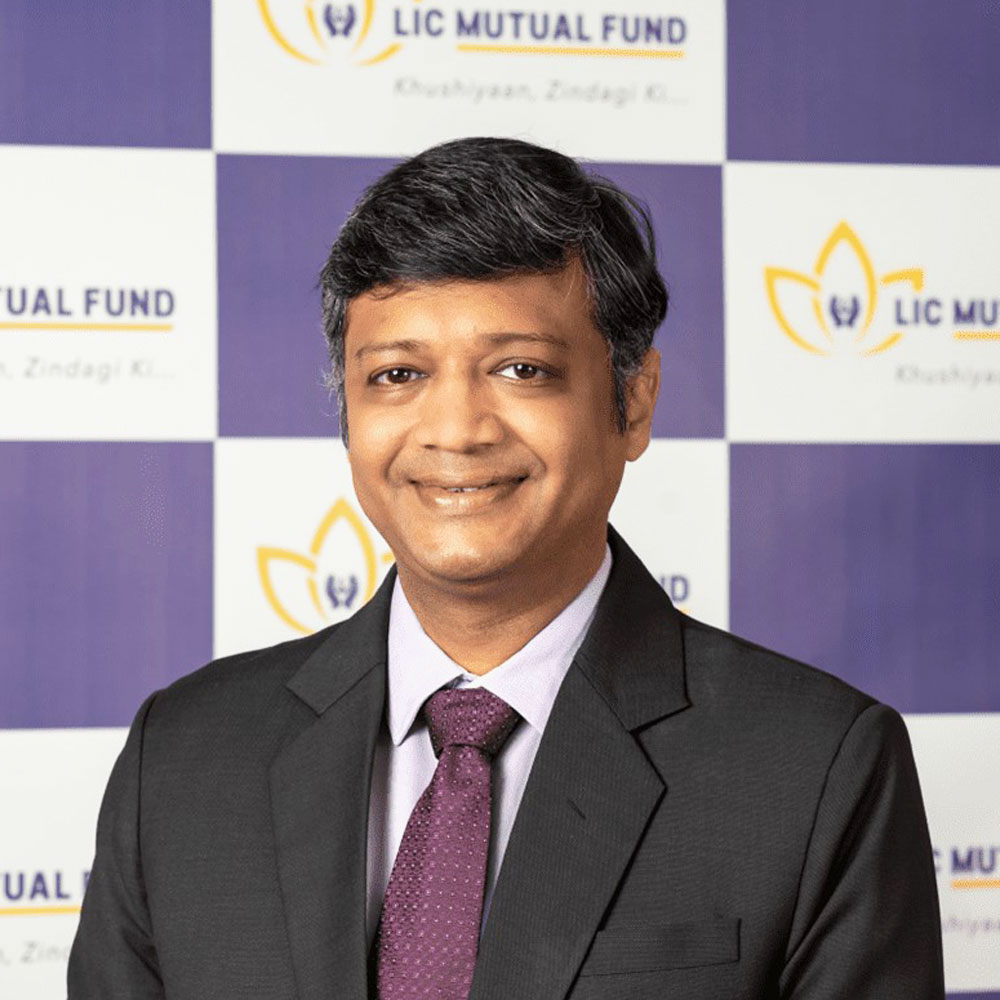Experience:
Co - CIO- Equity, LIC Mutual Fund Asset Management Ltd. (w.e.f. 19th June 2024)
Fund Manager (Equity)-SBI Pension Funds Private Limited (w.e.f. 29th April 2024 31st May 2024)
CIO- Equity, Golden Myriad (Garware Group Family Office) (21st November 2023- 4th April 2024)
Co-Fund Manager and Research Analyst - Nippon India Mutual Fund (25th March 2019- 20th November 2023)
Investment Manager and Research Head- BFSI - Bajaj Allianz Life Insurance Company (10th March 2016- 22nd March 2019)
Lead Analyst- BFSI Sector- Anand Rathi Shares & Stock Brokers Limited (16th February 2015- 29th February 2016)
Equity Research Analyst- Standard Chartered Securities (India) Limited (27th September 2012- 8th February 2015)
Equity Research Analyst- Religare Capital Markets Limited (19th October 2010- 21st September 2012)
Globally, developments like US-China trade normalization or even marginal de-escalation in the Red Sea corridor tensions can significantly boost global trade confidence and lower logistics costs. Additionally, clarity on the Fed's rate trajectory and US growth stability may be crucial in guiding FII flows and risk sentiment. From a structural lens, the interplay between policy support for manufacturing, continued capex-led growth, and domestic consumption recovery may remain our core investment thesis.
This behaviour is no longer event-driven but embedded in financial planning. Factors such as better access to financial products, regulatory trust in the MF framework, and digitization have made investing seamless. But beyond the tools, what stands out is the discipline - the awareness that wealth building is a marathon, not a sprint. This resilience is not temporary; it is a structural evolution that may serve as a shock absorber for Indian equity markets in volatile times.
In an environment of fragmented global supply chains, India is emerging as a credible alternative - both for manufacturing and services. As a result, we're structurally overweight on themes like Make in India, defense indigenization, and import substitution. At the same time, we remain selective in global-facing sectors - especially IT and pharma where margin pressures and order visibility are key variables. The idea is to maintain sectoral balance, backed by earnings clarity and cost leadership.
The next phase is likely to be marked by broader product innovation - from passive funds and smart-beta strategies to thematic and ESG offerings and Specialised Investment Funds (SIFs). Distributors and investors are both becoming more informed, which will demand a shift from mere distribution to need based engagement. For asset managers the focus will be on enhancing investor experience, simplifying communication, and delivering consistent outcomes. Scale and trust may be the true differentiators.
Sectorally, a blend of growth and stability is preferred. Manufacturing, industrials, and utilities offer visibility with policy tailwinds, while select pockets in BFSI and consumption offer scope for margin expansion. We also use cash tactically to navigate market excesses. Ultimately, it's about building portfolios that can perform not just in momentum phases but also withstand mean-reversion periods.
Please note we have published the answers as it is received from the Fund Manager of LIC.
Note: Views provided above are based on information in the public domain and subject to change. Investors are requested to consult their mutual fund distributor for any investment decisions.Source: RBI, Bloomberg.
Disclaimer: The views expressed herein are based on internal data, publicly available information and other sources believed to be reliable. Any calculations made are approximations, meant as guidelines only, which you must confirm before relying on them. The information contained in this document is for general purposes only. The document is given in summary form and does not purport to be complete. The document does not have regard to specific investment objectives, financial situation and the particular needs of any specific person who may receive this document. The information / data herein alone are not sufficient and should not be used for the development or implementation of an investment strategy. The statements contained herein are based on our current views and involve known and unknown risk and uncertainties that could cause actual results, performance, or event to differ materially from those expressed or implied in such statements. Past performance may or may not be sustained in the future. LIC Mutual Fund Asset Management Ltd. / LIC Mutual Fund is not guaranteeing / offering / communicating any indicative yield on investment made in the scheme(s). Neither LIC Mutual Fund Asset Management Ltd. and LIC Mutual Fund (the fund) nor any person connected with them, accepts any liability arising from the use of this document. The recipients before acting on any information herein should make his/her/their own investigation and seek appropriate professional advice and shall alone be fully responsible / liable for any decision taken on the basis of information contained herein.
MUTUAL FUND INVESTMENTS ARE SUBJECT TO MARKET RISKS, READ ALL SCHEME RELATED DOCUMENTS CAREFULLY












